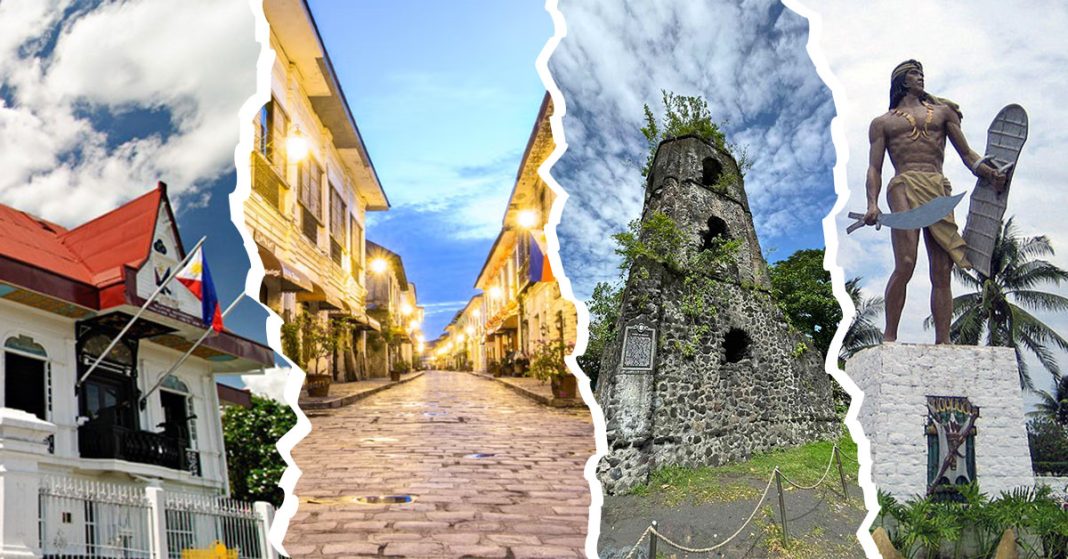The Philippines is more than just beaches and mangoes (though we’re definitely proud of those). If you want to understand what shaped the Filipino identity—from our bravery to our resilience—you need to explore the many historical places in the Philippines. These spots aren’t just for history buffs or field trips; they’re powerful reminders of our roots and can genuinely change how you see the country—and yourself.
So if you’re planning your next adventure, here’s a list of must-visit historical sites in the Philippines that deserve a spot on your bucket list.
What’s Inside
- Rizal Park (Luneta Park), Manila
- Intramuros, Manila
- University of Santo Tomas
- Malacañan Palace, Manila
- Binondo, Manila
- Barasoain Church, Malolos, Bulacan
- Aguinaldo Shrine, Kawit, Cavite
- Corregidor Island, Cavite
- Rizal Shrine, Calamba, Laguna
- Vigan City, Ilocos Sur
- Cagsawa Ruins, Albay
- Banaue Rice Terraces, Ifugao
- Mactan Shrine, Cebu
- Sandugo Shrine, Tagbilaran, Bohol
- Leyte Landing Memorial Park, Palo, Leyte
- Tabon Cave Complex, Quezon, Palawan
1. Rizal Park (Luneta Park), Manila
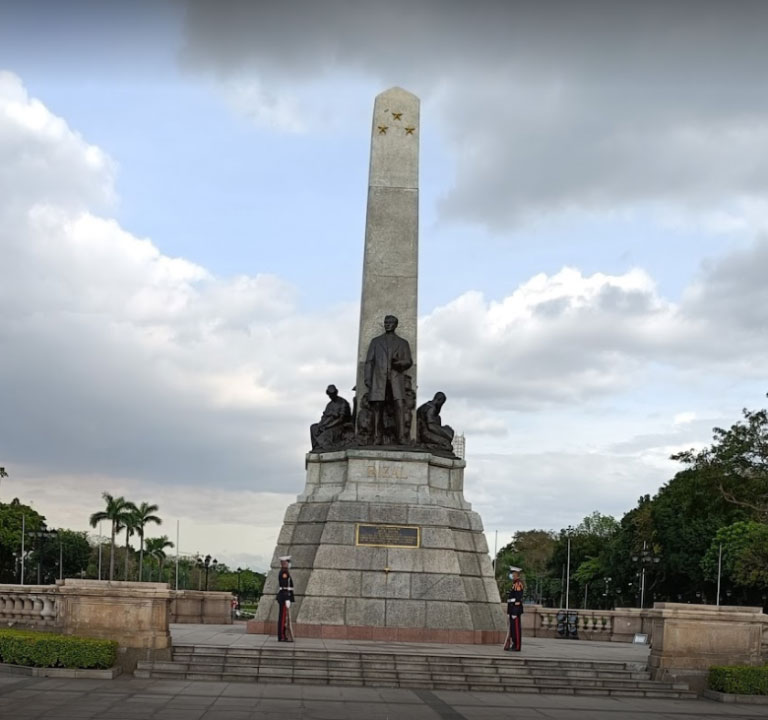
No list of must-visit historical places in the Philippines is complete without Rizal Park. This iconic 60-hectare space in Manila marks the execution site of Dr. José Rizal, whose death helped spark the revolution against Spain.
Today, it’s home to the Rizal Monument, museums, gardens, and even a replica of his prison cell. More than a memorial, it’s also one of the top picnic spots in Metro Manila, where locals and tourists unwind, stroll, and reflect on our national hero’s legacy.
2. Intramuros, Manila
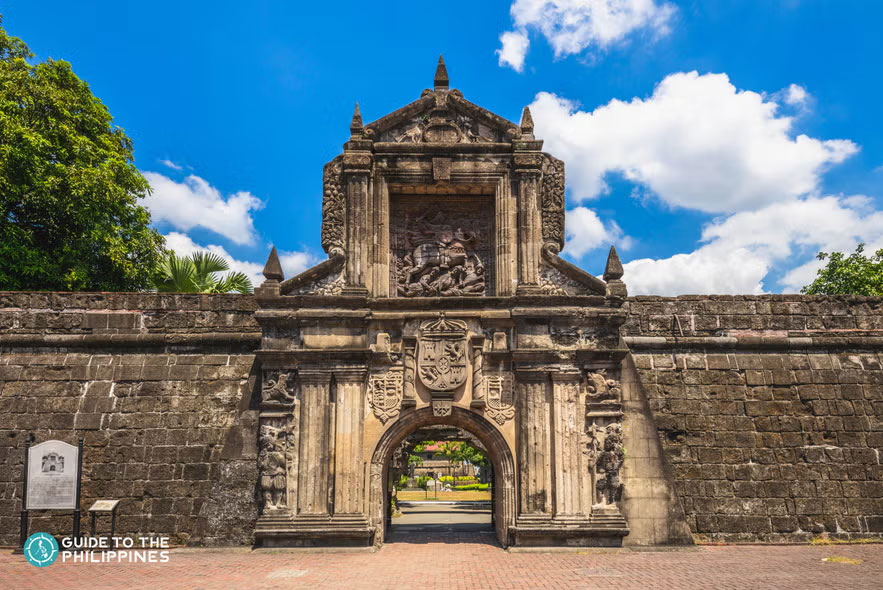
Next up is Intramuros, also known as the “Walled City” , which was the seat of power during the Spanish colonial period. Walking through its cobbled streets feels like stepping back in time. An Intramuros historical tour isn’t just a photo op; it’s a crash course in Philippine colonial history.
What to See:
- Fort Santiago – A former military fortress and now a shrine to national hero José Rizal.
- San Agustin Church – A UNESCO World Heritage Site and the oldest stone church in the country.
- Casa Manila – A museum that shows what life was like for the upper class during Spanish times.
Related: 9 Places to Explore in Intramuros, Manila
3. University of Santo Tomas, Manila
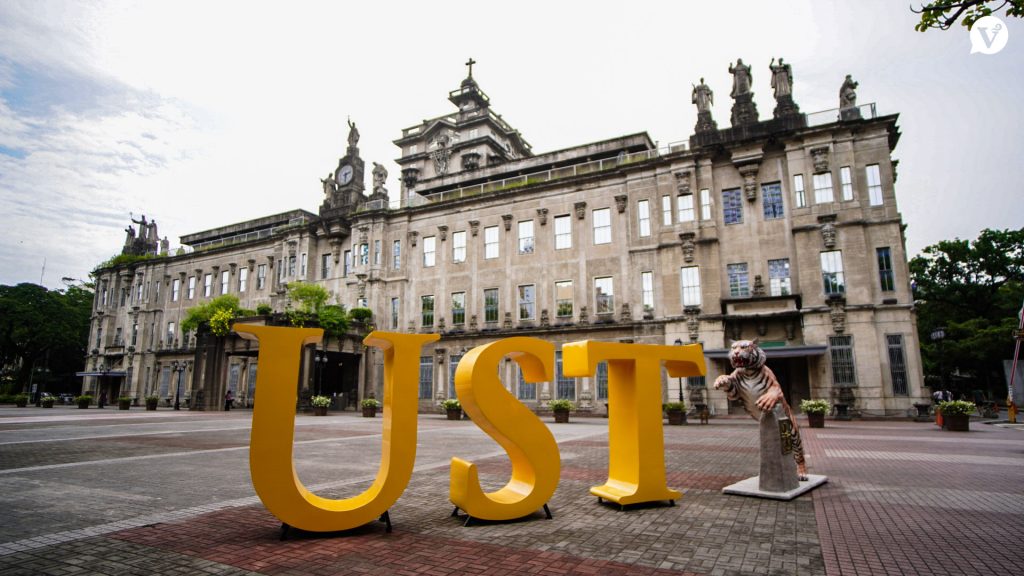
Founded in 1611, the University of Santo Tomas (UST) is the oldest existing university in Asia. It has survived earthquakes, wars, and pandemics, all while producing heroes, artists, and national figures—including Jose Rizal himself (he studied here after graduating with a Bachelor of Arts degree in Ateneo). The campus is also home to beautiful Spanish-era buildings, a grand church, and the UST Archives—the oldest in the country.
4. Malacañan Palace, Manila
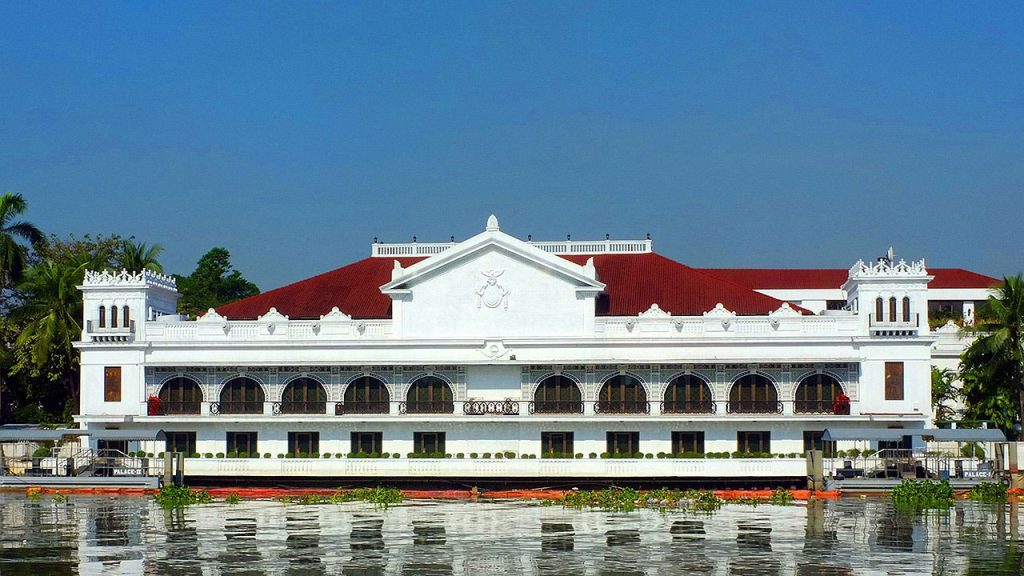
Serving as the official residence and workplace of Philippine presidents, Malacañan Palace is rich in political and cultural history. From Spanish governors-general to modern-day presidents, this riverside complex has seen it all. The Malacañang Museum is open for tours and contains everything from official portraits and clothing to vintage cars and furniture.
5. Binondo, Manila
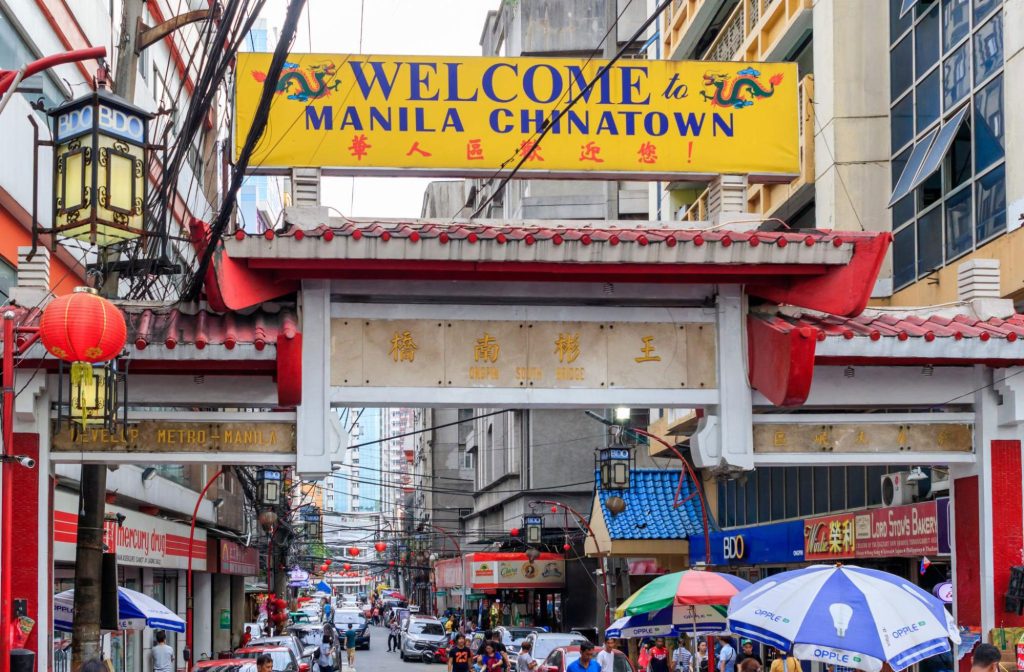
Binondo isn’t just a food haven—it’s the oldest Chinatown in the world, established in 1594. It’s where Chinese immigrants, Spanish colonizers, and Filipinos merged cultures, traded goods, and shaped the early economy of colonial Manila. A stroll through Ongpin Street, old Chinese temples, and Spanish-era churches like Binondo Church gives you a colorful glimpse of multicultural history in action.
If you’re planning a Binondo food trip and heritage walk, don’t miss traditional eateries, the First United Building, and heritage shopfronts from the 1900s.
6. Barasoain Church, Malolos, Bulacan
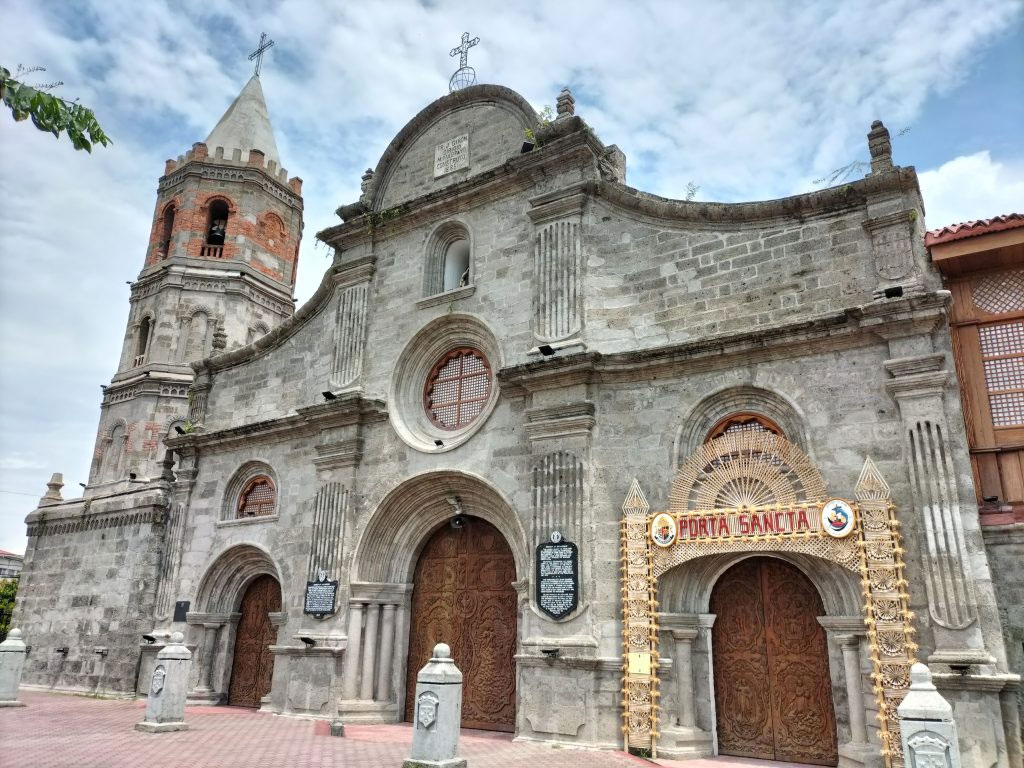
Known as the “Cradle of Democracy in the East,” Barasoain Church is where the First Philippine Republic was built in 1888. If you want a deeper understanding of Barasoain Church history, this is the place to be.
What You’ll Learn:
This church was central to the Malolos Congress, which drafted the first constitution of the Philippines. It’s not just a place of worship—it’s a symbol of independence.
7. Aguinaldo Shrine, Kawit, Cavite
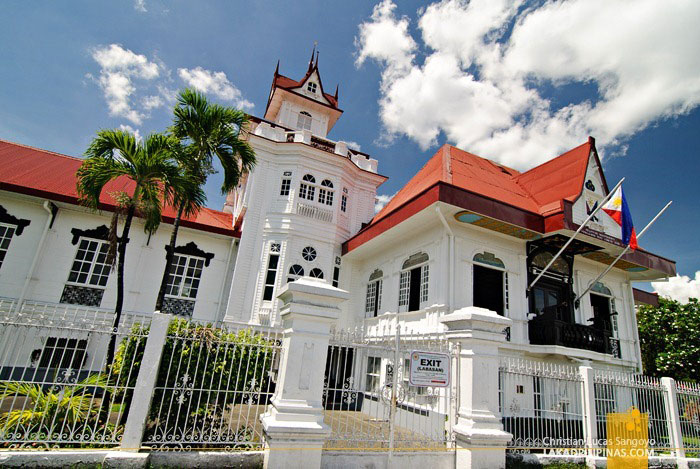
This iconic mansion is where Emilio Aguinaldo declared Philippine independence from Spain on June 12, 1898—right from the balcony. The Aguinaldo Shrine is now a museum filled with revolutionary memorabilia, secret tunnels, and antique furniture that bring the First Republic era to life.
Don’t miss the room where Aguinaldo planned his battle strategies and the exact spot where the Philippine flag was first unfurled. A must-see for anyone tracing the roots of Philippine nationalism.
8. Corregidor Island, Cavite
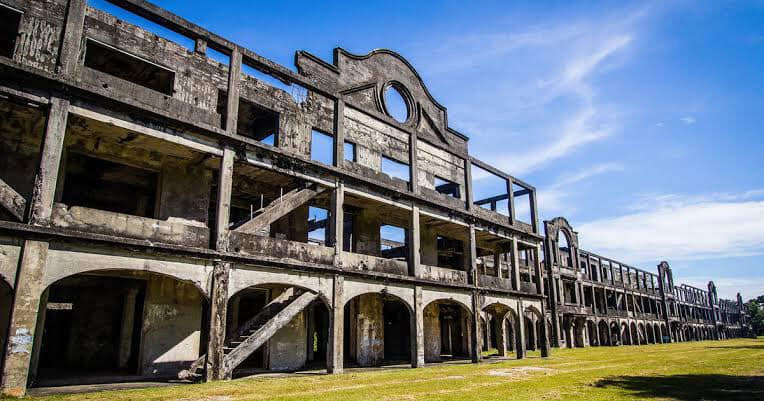
This one’s a ferry ride away from Manila, but it’s worth every minute. Corregidor Island was a key site during World War II, and walking through its ruins gives you a deep appreciation for the Filipino and American soldiers who fought here.
Key Attractions:
- Malinta Tunnel – Once used as a bomb-proof hospital and headquarters.
- Memorials and Batteries – Silent witnesses to the war that changed the world.
If you’re into historical World War II sites in the Philippines, Corregidor should be high on your list.
9. Rizal Shrine, Calamba, Laguna
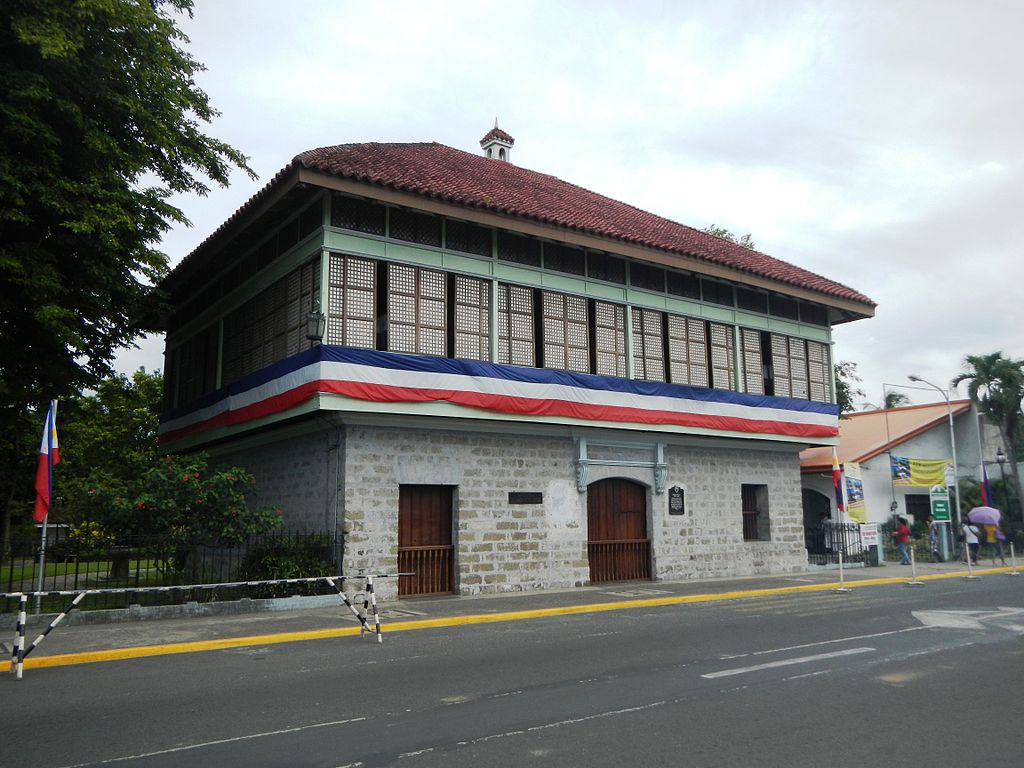
For something a bit more personal, head to Calamba to visit the Rizal Shrine—the birthplace of Jose Rizal, our national hero. The bahay-na-bato structure has been preserved to look just like it did during Rizal’s childhood.
Why It Matters:
Seeing where Rizal grew up helps you understand the early life of the man who inspired a revolution with his writing. It’s humbling and inspiring all at once.
10. Vigan City, Ilocos Sur
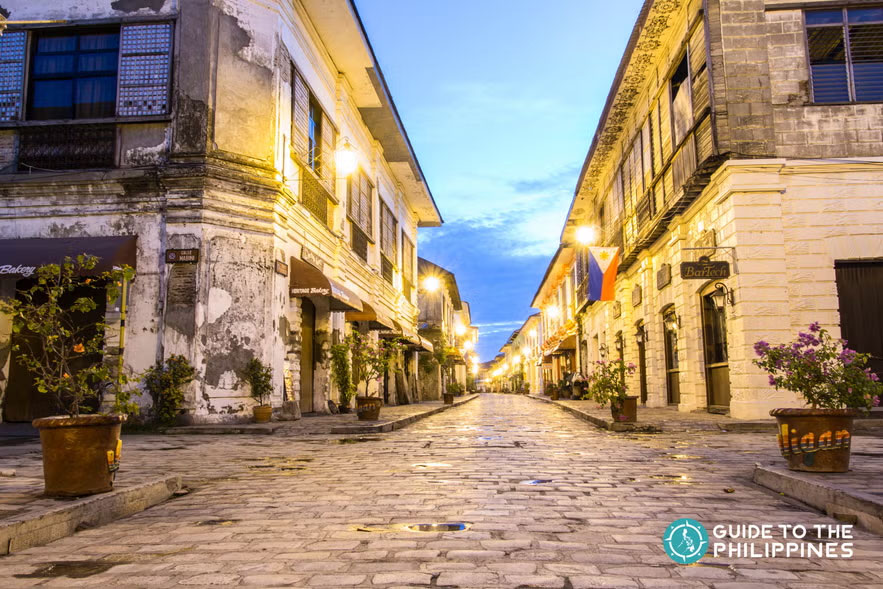
A UNESCO World Heritage Site, Vigan is one of the best-preserved Spanish colonial towns in the Philippines. Riding a kalesa down Calle Crisologo feels like a scene out of a period film. Vigan perfectly blends history, culture, and charm.
Don’t Miss:
- Calle Crisologo – Lined with ancestral houses and cobblestones.
- Syquia Mansion – Home to former President Elpidio Quirino.
- Pagburnayan – A pottery shop where you can try traditional clay-making.
Related: Step Back in Time: 14 Must-Visit Vigan Attractions
11. Cagsawa Ruins, Albay
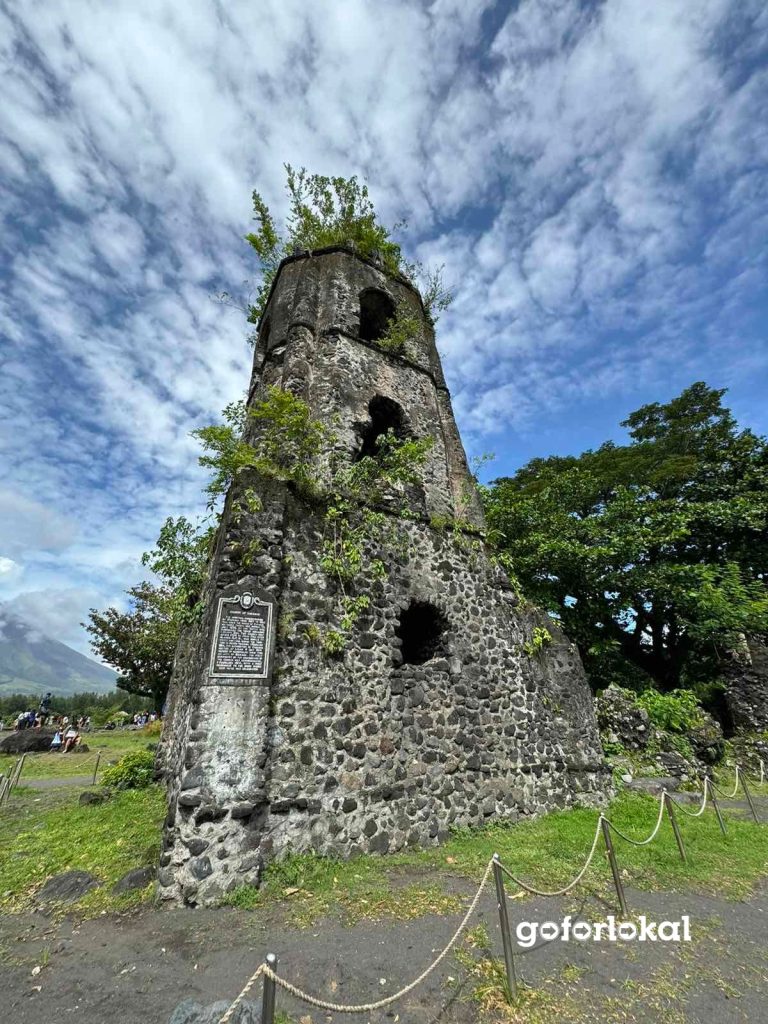
What’s left of a 16th-century Franciscan church destroyed by Mayon Volcano’s eruption in 1814, the Cagsawa Ruins are a dramatic reminder of nature’s power. The church belfry still stands, framed by Mount Mayon in the background—a symbol of tragedy, survival, and beauty.
12. Banaue Rice Terraces, Ifugao
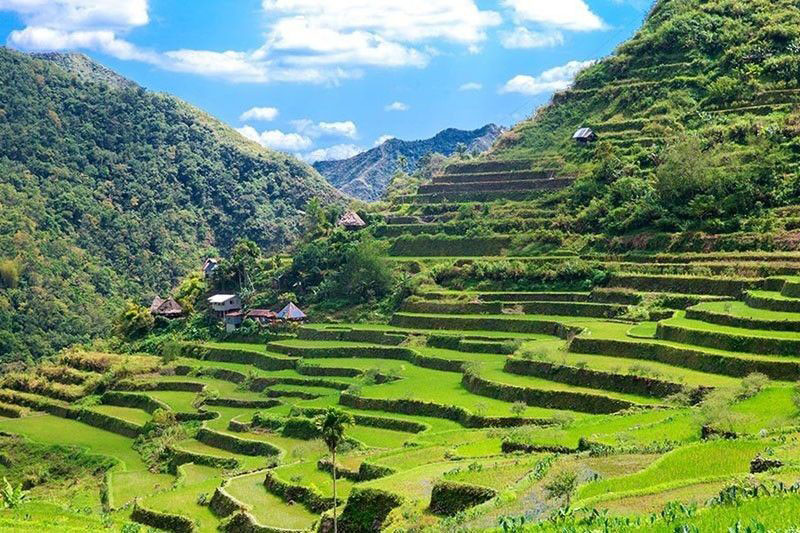
Built over 2,000 years ago by the Ifugao people, the Banaue Rice Terraces are an engineering marvel—and one of the most iconic pre-colonial historical sites in the Philippines.
Why It’s Life-Changing:
It shows how Filipinos lived sustainably and skillfully with nature long before modern technology. These terraces are a testament to ancestral ingenuity.
13. Mactan Shrine, Cebu
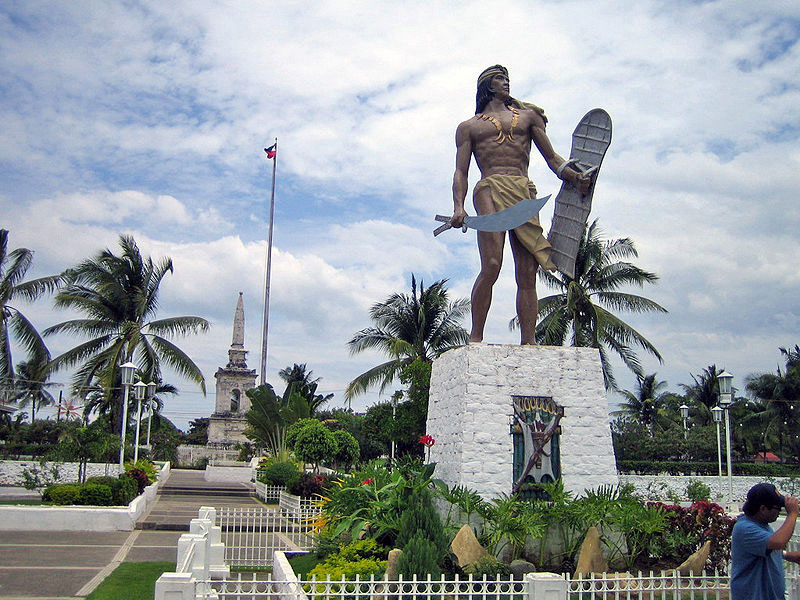
Located in Lapu-Lapu City, the Mactan Shrine marks the spot where Lapu-Lapu defeated Ferdinand Magellan in 1521. It’s one of the most famous Philippine historical landmarks symbolizing resistance to colonization.
Highlights:
- Lapu-Lapu Monument – Honoring the first Filipino hero.
Magellan Marker – Indicates where the Portuguese explorer met his end.
14. Sandugo Shrine, Tagbilaran, Bohol
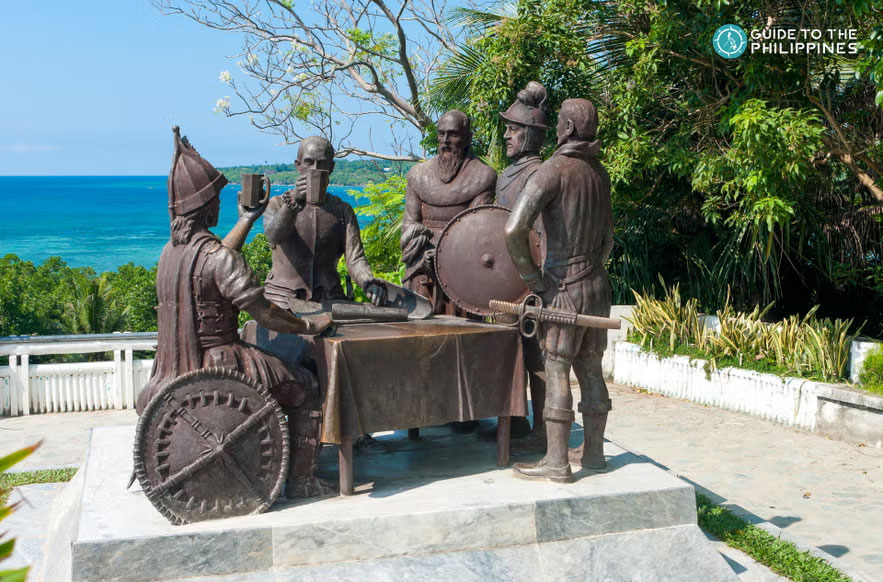
The Sandugo Shrine commemorates the Blood Compact (Sandugo) between Spanish explorer Miguel López de Legazpi and Datu Sikatuna of Bohol in 1565—one of the first peace treaties between native Filipinos and the Spaniards. This historic pact marked the start of formal Spanish relations in the islands. The life-sized bronze sculpture near the coastline is a powerful symbol of diplomacy, unity, and the complex beginnings of colonial rule.
It’s a key stop if you’re exploring other historical landmarks in Bohol like Baclayon Church and Panglao watchtowers.
15. Leyte Landing Memorial Park, Palo, Leyte
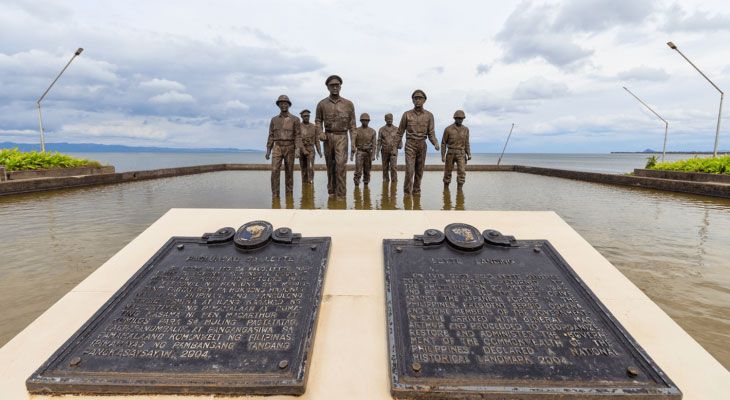
On October 20, 1944, General Douglas MacArthur famously fulfilled his promise—“I shall return”—by landing on the shores of Leyte. This moment marked the beginning of the liberation of the Philippines from Japanese occupation during World War II. The Leyte Landing Memorial Park now stands as a peaceful tribute with life-sized bronze statues depicting MacArthur and his men walking through the surf.
Visiting this Douglas MacArthur landing site is like stepping into a real-life snapshot of Philippine war history. There’s even a small museum and marker detailing the events of the Leyte Gulf landings.
16. Tabon Cave Complex, Quezon, Palawan
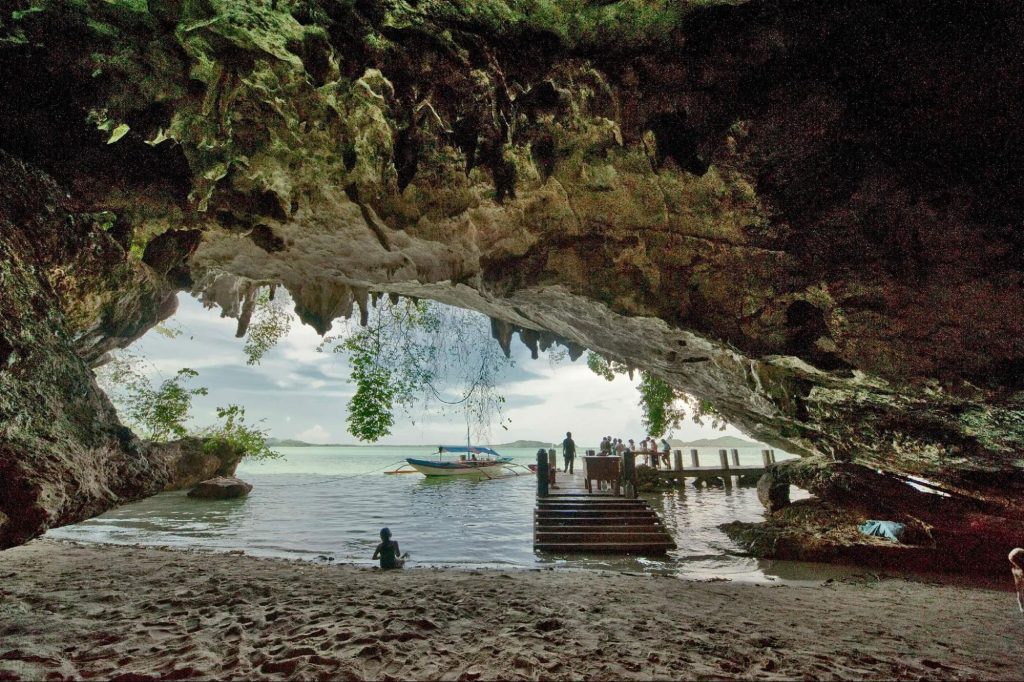
Known as the “Cradle of Philippine Civilization,” the Tabon Cave Complex is one of the most significant archaeological sites in the Philippines. This is where the remains of the 22,000-year-old Tabon Man were
discovered—along with ancient burial jars, tools, and other relics that show how early Filipinos lived long before colonizers arrived.
Located in the municipality of Quezon, Palawan, the caves are a must for those interested in prehistoric Philippines and early Austronesian cultures. It’s a remote trip, but totally worth it for serious history buffs.
Sure, these places make for stunning travel photos, but they offer so much more. Visiting historical places in the Philippines gives you context. It helps you understand what Filipinos went through, fought for, and stood against. More than sightseeing, it’s about soul-searching.
Whether you’re a traveler looking for meaning, a student wanting a deeper appreciation of history, or a curious Pinoy wanting to reconnect with your roots—these Philippine historical landmarks are must-visits.

